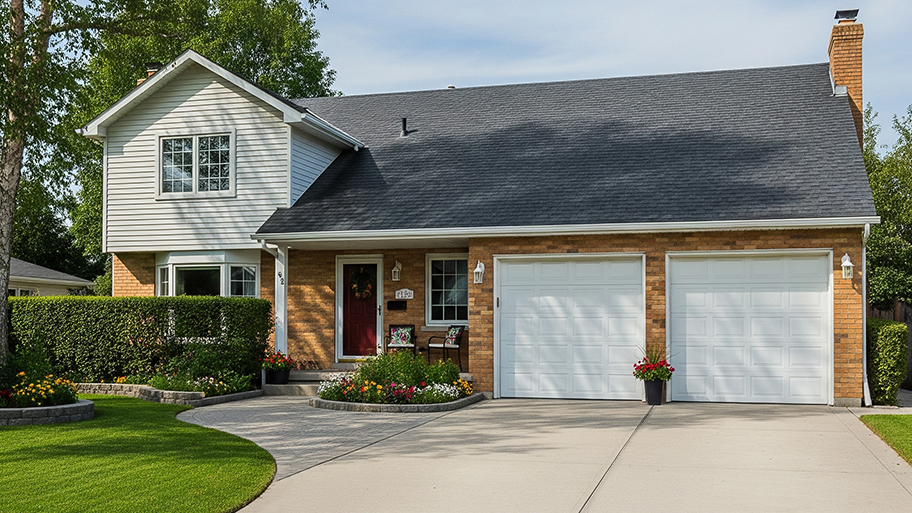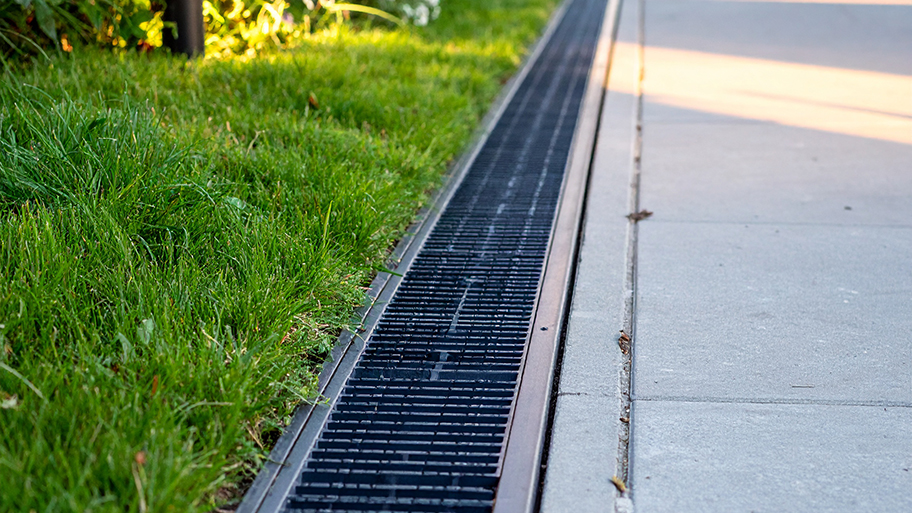
Concrete driveways stand up to a lot of pressure over the years. How much do concrete driveway repairs cost when it's time to give it a little TLC?
You can fix a discolored concrete floor or patio in a few easy steps


Discoloration often happens due to inconsistency in materials and installation.
Fix concrete discoloration by cleaning the concrete, staining, painting, or resurfacing it.
Prevent concrete discoloration by using a reputable contractor.
Despite the durability of concrete, you may have noticed imperfections, stains, and concrete discoloration over time. Discoloration can happen thanks to various factors, including age, oil spills, and installation mistakes. Luckily, it can be easy to pinpoint the reason for concrete discoloration and implement a fix. You can have a fresh-looking surface in no time, whether it’s your garage floor, sidewalk, patio, or driveway.
When a pro first installed your concrete floor or driveway, it was smooth, shiny, and all the same color. Now, it’s blotchy and discolored. There are several reasons why this may have happened.
Garage floors, driveways, and concrete floors can take up to five months to cure fully, so if you have fairly new concrete with discoloration, you may want to give it a bit more time to settle in first.
Concrete mix should have the same proportions across the project to create a consistent look. Sometimes, the floor or sidewalk is installed across many days or even at different times during the day. In that case, your concrete may appear blotchy thanks to varying proportions or temperature changes.
If you’re still in the process of getting new concrete, ensure your contractor only uses materials that comply with American Society for Testing and Materials (ASTM) standards. Also, ask plenty of questions about work consistency when getting your quote and check reviews.
Sometimes, mixing concrete on-site can cause the surface of your concrete to appear blotchy and discolored. In addition to the issues mentioned above, here are a few other factors that can cause discoloration:
Adding calcium chloride to speed up the drying process: If not mixed correctly, it will create discoloration.
Covering a slab with polyethylene sheeting: Discoloring can occur when not all portions of the plastic are in direct contact with concrete.
Lack of sealing, use of poor-quality sealant, or improper application: These can all cause discoloration.
Outdoor concrete slabs, such as garages and driveways, should hold the weight of cars and trucks through all kinds of weather and for many long years with little evidence of cracks or discoloration. Pros should adjust for issues like changes in temperature and drying times to ensure your concrete is smooth, durable, and spotless.
Many turn to sustainable ways to get a job done, and pouring fresh concrete or upgrading existing concrete floors is no different.
But you might encounter problems here because some recycled and natural materials used to make concrete-like materials perform differently than traditional concrete mixes. So, if you used this type of material to replace part of your floor, driveway, or sidewalk, you may see areas of discoloration as it mixes with your existing materials.
Sometimes, you just end up with discolored concrete no matter how vigilant you are. Luckily, there are common fixes you can do yourself to clean your driveway to remove stains. Or hire a pro to do the work.
If your concrete is only mildly discolored, you may be able to clean the surface with hot water, then scrub with a stiff brush, and repeat as needed on stubborn areas. A pressure washer with an attachment works best to remove grime, dirt, mildew, and rust from concrete.
Adding a tint of color to discolorations can camouflage imperfections and give your space a whole new look. Concrete stains cost around $50 to $230 or $0.20 to $0.85 per square foot, not including the protective topcoat.
If your concrete is badly discolored, you may want to try mixing up a mild solution of 1% to 3% muriatic acid with water and applying it to the discolored areas. If you’re working on a garage floor or indoor area, leave windows and doors open for ventilation. Only use this solution in small doses when indoors.
Often used to hide graffiti, you can apply a thin polymer-modified coating to hide dislocations and stains on your concrete. A 50-pound bag costs about $20 at your local hardware store.
Essentially a tougher version of interior wall paint, concrete paint is affordable and easy to apply. However, it is highly susceptible to damage from chemicals and road salt, so it may not be an option in some areas of the country. Plus, you’ll have to reapply a new coat every two years. Concrete paint costs about $40 or $0.15 per square foot.
When hiring a concrete company, get quotes from multiple pros and look for contractors who are licensed, insured, and bonded and who have great reviews.
To hide concrete discoloration and give your concrete a fresh look, consider resurfacing your porch, garage floor, patio, or sidewalk. After repairing concrete cracks and preparing the surface, pour a thin layer of concrete on top of the existing concrete. You can choose a stamped concrete overlay or keep it the standard color and design. Resurfacing concrete is best left to a local concrete resurfacing pro with the experience and tools to ensure a durable, uniform finish.
The cost of resurfacing concrete runs from $3 to $9 per square foot.
To prevent discolored concrete, it pays to find a concrete contractor who provides quality work in your area. Ask them these questions:
Do you use materials that comply with ASTM standards?
If necessary, will you adjust to changes in weather?
How will you lay the subgrade so it’s uniform and has a consistent appearance?
Will you perform a test pour to see what the concrete will look like when dry?
Do you use chloride-bearing mixtures or calcium chloride to speed up the drying process?
Approximately how many concrete projects have you completed?
Are you licensed and insured?
Could I speak with two to three homeowners who have used your services?
Pouring a concrete patio, sidewalk, driveway, or garage floor isn’t straightforward. You need to ensure the concrete mixture, temperature, and curing process are controlled and uniform. It’s best to hire a concrete pro who has the tools and experience to ensure a smooth, durable, and uniform finish.
The average cost to hire a concrete contractor is $50 to $100 per hour, depending on the type of work and size of the project.
Kathryn Pomroy contributed to this piece.
From average costs to expert advice, get all the answers you need to get your job done.

Concrete driveways stand up to a lot of pressure over the years. How much do concrete driveway repairs cost when it's time to give it a little TLC?

Between the endless customizations and decades of strength, the cost of a concrete driveway may be worth the investment. Let's break down your bottom line.
Need to breathe new life into your exterior stoop? Use this guide on concrete step repair cost to see the price of a professional repair.

Before hiring a concrete driveway contractor, you should know what you’re looking for. Here’s what you need to know on how to hire a driveway contractor.

A concrete driveway can add value to your home. Learn what factors influence your return on investment (ROI) for a new concrete driveway

A channel drain installation requires a trench, PVC piping, and concrete. Keep reading to learn how to install a channel drain yourself.